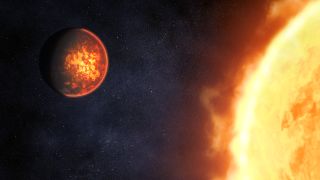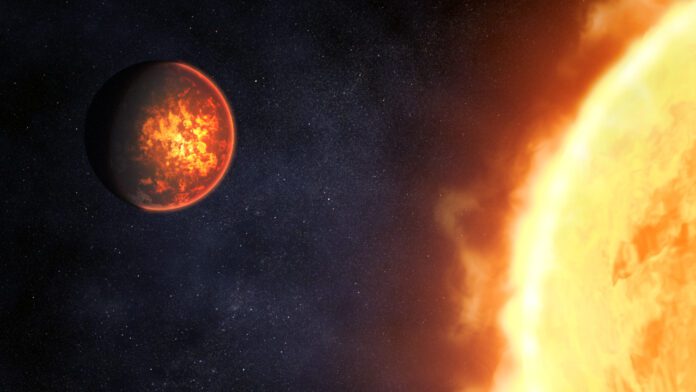
(Picture credit score rating: NASA, ESA, CSA, Dani Participant (STScI))
Virtually on a daily basis, the number of confirmed exoplanet discoveries grows.
The massive majority of those planets, which sit down right above 5,500 in whole, have been identified by the Kepler assign telescope. However for the previous couple of years, NASA’s Transiting Exoplanet Stare Satellite tv for pc (TESS) has been step-by-step including uncommon alien worlds to our rising planetary catalog of the cosmos.
The usage of a statistical design to brush by TESS’s large parts of data on the night sky, a neighborhood of scientists led by Priyashkumar Mistry, a Ph.D. scholar on the Faculty of Modern South Wales, include reported on the potential discovery of eight uncommon exoplanets. What’s additional, every and every any such planets is taken into legend to be a “provocative-Earth,” a class of exoplanet that’s higher than Earth however smaller than Neptune, based totally on NASA.
So far, TESS has confirmed practically 400 exoplanets, and yet another 6,977 sit down up for affirmation. The satellite tv for pc television for laptop observes discontinuance by stars, making an attempt ahead to dips, or fluctuations within the brightness of the celebrities. Such dips provide an explanation for to astronomers that one factor potential handed in between us and the star — and that one factor could effectively very efficiently be a peculiar exoplanet.
“If this orbital movement ever comes between us and the star we’re in a position to behold a dip within the brightness of that seen star. This is what we identify a transit,” Mistry instantaneous Location.com.
Mistry and his group ragged the Validation of Transiting Exoplanets utilizing Statistical Instruments (VaTEST) enterprise to determine anomalies, which can effectively provide an explanation for the presence of exoplanets, in TESS’s information.
Or not it is not most interesting the case that these dips are led to by transiting exoplanets. Such false positives, which can effectively include a star orbiting yet another star (binary system), or a background supply, could effectively generate a transit-appreciate sign.
Mistry explains that the transit design can most interesting present the radius of an orbiting physique. What if a planet sized star, akin to a brown or pink dwarf is in orbit? Astronomers would most ceaselessly work out the mass of a transiting object utilizing a mode generally known as radial breeze (RV), which is the assign an orbiting physique exerts a gravitational pull on its dwelling star. This ends within the star doing a exiguous dance, or ‘slither’.
To detect the RV sign, though, it should take a number of time watching right one star, particularly if the exoplanet has a protracted orbital length — time and belongings that the researchers did not include.
However, the VaTEST provided Mistry and his group with yet another method of confirming whether or not or not these transiting occasions have been really the results of orbiting exoplanets.
“The instrument takes within the transit information and some inputs akin to transit depth, length, TESS identifier, and so forth. Then based totally on that it begins changing into diversified fashions on the guidelines and performs some probability calculations. After which within the extinguish it calculates Fallacious Apparent Probability (FPP), if it seems to be <1% then we’re in a position to validate that transit sign as a planetary transit,” Mistry says.
The statistical instrument calculated that eight such transiting occasions have been potential led to by a class of exoplanet that astronomers identify ‘provocative-Earths’ — and that six of them descend into the plot recognized as ‘keystone planets,’ which include traits that assist astronomers higher understand the full exoplanet inhabitants. This makes them extraordinarily trustworthy for additional gaze.
What’s a keystone planet?
To attain what astronomers imply by ‘keystone planet’, we first want to understand the radius valley perception. The radius valley finds an absence of planets between 1.5 and a couple of Earth radii, with orbital durations decrease than 100 days within the recognized inhabitants of exoplanets that orbit low-mass and solar-appreciate stars. This radius vary covers provocative-Earths, and yet another class of planet — sub-Neptunes, which can be exoplanets with a smaller radius than Neptune.
Why does this shortage exist? Some theories counsel this is able to effectively merely be attributable to photoevaporation mass loss, the assign intense radiation from a dwelling star could effectively step-by-step strip away a planet’s ambiance over time. This talent that planets inside this keystone plot have to be predominantly rocky, however observations are however to substantiate whether or not or not that’s absolutely the case.
“To attain this contradiction we wish more and more additional keystone plot planets. And that is the reason our validated exoplanets are provocative to gaze,” explains Mistry. Including additional keystone planets to our exoplanet catalog, with the potential to assemble apply up observations with the James Webb Location Telescope (JWST), could effectively merely nonetheless assist astronomers resolve what clarification best matches this thriller within the exoplanet information.
Might effectively effectively any such provocative-Earth’s be a dwelling to existence?
Whereas provocative-Earth’s assemble include the identify ‘Earth‘ of their title, this does not principally check with their lifestyles-giving potential. Moderately, existence would potential bag it robust to set aside itself on any of the provocative-Earths discovered by Mistry and his group. The reason being the discontinuance proximity these planets have to their dwelling stars.
“They’re nearer to their host star than Mercury is from the photo voltaic,” says Mistry. This most ceaselessly method they’re tidally locked, the assign one side of the planet is perpetually going by the star, with the diversified side cloaked in everlasting darkness. On this sense, it is each scorching or freezing temperatures, neither of which can be particularly lifestyles-pleasant.
“However who’s aware of. The cosmos is full of so many surprises,” Mistry quips.
A gaze of the eight provocative-Earths may even be discovered on the preprint server arXiv, with the paper at present underneath overview on the Publications of the Gargantuan Society of Australia.
Be a part of our Location Boards to retain speaking assign on essentially the most fashionable missions, night sky and further! And should it is potential you will effectively perchance merely include acquired a information tip, correction or assertion, tell us at: group@assign.com.

